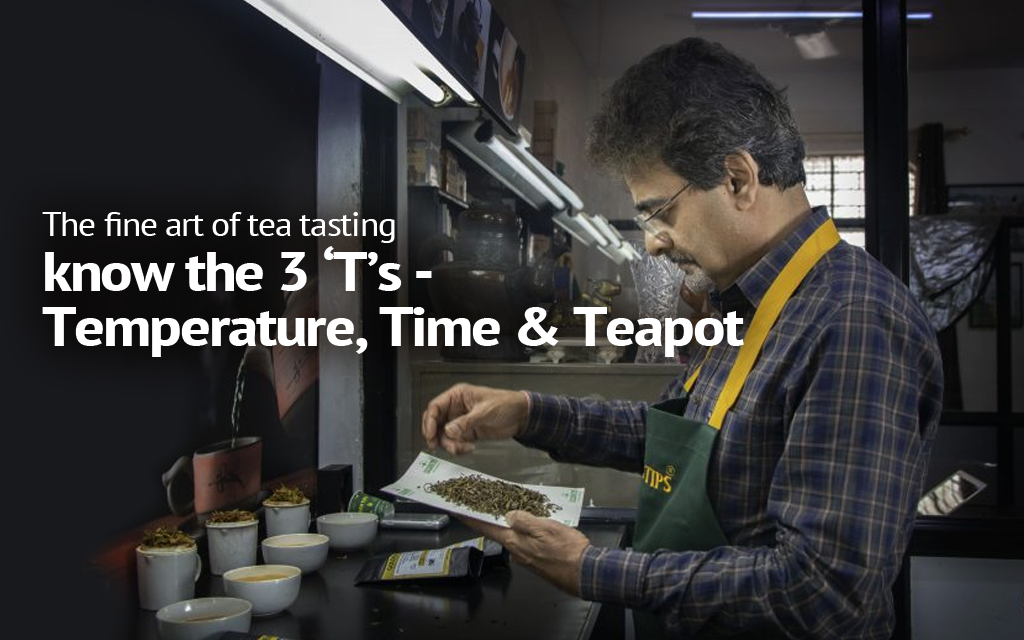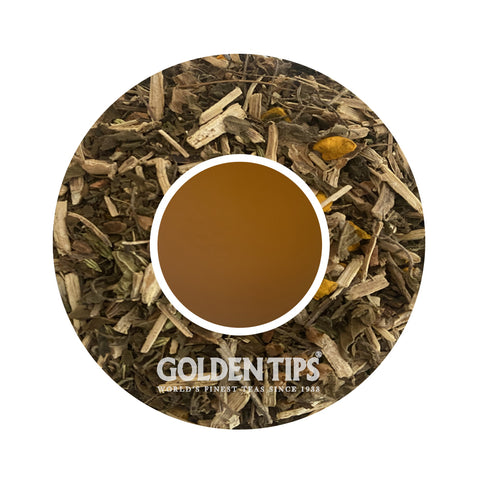
- Golden Tips Tea
- Tea tasters need their Olfactory nerves alive so that they identify the kind of fragrances that are released by the tea samples in question.
- Knowledge of cultivation and manufacturing processes in a tea plantation such as tea kinds, varieties, and grades and again the characters of the resulting liquors.
- They should also be away from certain habits like smoking, alcohol, and tasting strong spicy foods.
- Tea tasters should be knowledgeable about the tea market and keep abreast about changing market forces, and should be willing to undertake strenuous work.
- Malty
- Earthy
- Fruity
- Sweet
- Smoky
- Vegetal
- Grassy
- Herbaceous
- Nutty
- Floral
- Fruity
- Sweet
- Buttery
- Herbaceous
- Floral
- Buttery
- Fruity
- Grassy
- Vegetal
- Sweet
- Bitter
- Smooth
- Chamomile tea tastes floral and light
- rooibos tea tastes more robust, with a mild natural sweetness
The fine art of tea tasting – know the 3 ‘T’s -temperature, time, and teapot

First published on Today's Traveller; contributed by Madhav Sarda, Managing Director, Golden Tips Tea
Madhav Sarda shares the fine art of tea tasting to ensure that you get the perfect cup every time.
The job of a tea taster has gained mythical proportions over the years. In fact, tea tasting is an art that requires years of focused training to understand the goodness of tea and eventually differentiate between suitable requirements for the appropriate blend consistently.
The love for the elixir made the British do some industrial reconnaissance and bring the seeds of Camellia Sinensis to the foothills of the mighty Himalayas – Darjeeling.
With an altitude between 1200- 6,000 ft above sea level, steep slopes, ample humidity, rainfall, shade, mist and acidic soils – Darjeeling is blessed with a unique terrain that infuses ‘magic’ into its teas. These teas are one of the most loved beverages in the globe, but there is a lot that goes on before the final product reaches your cup.
Tea tasting is a process by which a trained taster accesses the quality of a particular tea and in some ways, it is similar to wine tasting as it uses four basic steps i.e., visual, smell, taste and touch. Identification of the difference in aroma and flavour between various teas is a pre-requisite of a tea taster.
Thereafter, he gives expert advice on the various ways in which tea can be brewed in order to achieve a particular taste. Tea tasters also help to brand the tea varieties according to their quality. A master tea taster describes the tea and values it after tasting. So, they need to have their taste buds alive to understand and differentiate the contents of taste.
As tea is manufactured across the world, a taster needs to consider topography, climatic conditions, manufacturing process and evaluate the different clones of the beverage. Be it Black Tea, White Tea, Oolong Tea or Green tea, the flavour and taste of each tea are different. A trained taster needs to ascertain the quality prior to sale or if they are considering blending it with other tea.
During peak tea season, a taster deals with hundreds of samples a day. He evaluates the teas based on his expertise and experience.
The Tea Tasting Process
The 3 “T’s” play a major role in brewing tea –Temperature, Time and Teapot
Temperature
The temperature plays a very important role while preparing a good tea. In fact, each variety of tea, from green to black, needs to be prepared at a different range of temperature. Because of its more delicate processing, green tea often needs a cooler temperature to bring out the right flavour. Black tea on the contrary, due to its full oxidation, needs hotter water to bring out its characteristic sweetness and aroma.
Time
Different kinds of tea require different durations of time to brew. Generally, delicate teas such as green tea need to be brewed for shorter times, while energetic black teas benefit from longer brewing (2-3 mins for Green and 3-5 mins for Black).
Teapot Material
The material of the teapot also impacts the quality of the brew. When considering a teapot, it is important to consider the kind of tea and the temperature at which it is prepared. Materials like iron are excellent at retaining heat, while glass or porcelain dissipate heat quickly. Therefore, iron and similarly heavy materials are better for teas that need to be prepared at high temperatures, such as black tea. Green and white teas, on the other hand, need a pot that stays cool like glass and porcelain.
A tea taster needs to have great control over his sensory organs. For example
Sight
Whatever be your choice of tea, the leaf has to be dry, free of moisture content and the tea should not stick onto each other. During the screening of the teas, a taster would place part of dry tea on a clean white screening paper and observe the leaf colour, size and consistency in shape and style.
Smell
The first sense that is evoked in tasting is the smell as it is the nose that tells us whether we like what we are about to taste. A tea taster uses deep inhalations to determine the aroma of tea.
Taste
A deep breath before the taster slurps the brewed tea into the mouth. While doing so, the taster is allowing tea as well as ample oxygen to pass over all the taste receptors on the tongue as this will give an even profile of the tea. The initial impression that you have is the headnote – what you first felt while tasting. The secondary or the body note is the lasting impression. Finally, you get an aftertaste that will linger for some time. All three notes help you in determining the quality of tea.
What does it entail to be a Tea Taster?
Drinking tea alone can be a meditative experience, but to get the most out of tea, try to drink it with others. It is like reading your syllabus alone or in a classroom where discussions lead to more learning and better results.
What Do Different Types of Tea Taste Like?
While every tea is a little different, most categories of tea have somewhat similar flavour profiles. So, for example, most black teas will taste more similar to one another than to green tea. Below are some common tasting notes for different types of tea.
Black Tea Tasting Notes
Black teas tend to be robust and full-bodied. Black tea tasting notes may include:
Green Tea Tasting Notes
Green teas are steamed to halt the oxidation process soon after harvest. Green tea tasting notes include:
White Tea Tasting Notes
White teas are minimally processed and tend to be particularly light and delicate. White tea tasting notes include:
Oolong Tea Tasting Notes
Oolong teas are partially oxidized, and have similarities to both black and green teas. Oolong tea tasting notes include:
Matcha Tea Tasting Notes
Matcha is a shade-grown, stone-ground powdered green tea. Matcha tasting notes may include:
Herbal Tea Tasting Notes
Because herbal teas span such a wide range, there are all sorts of tasting notes present in these teas.




























